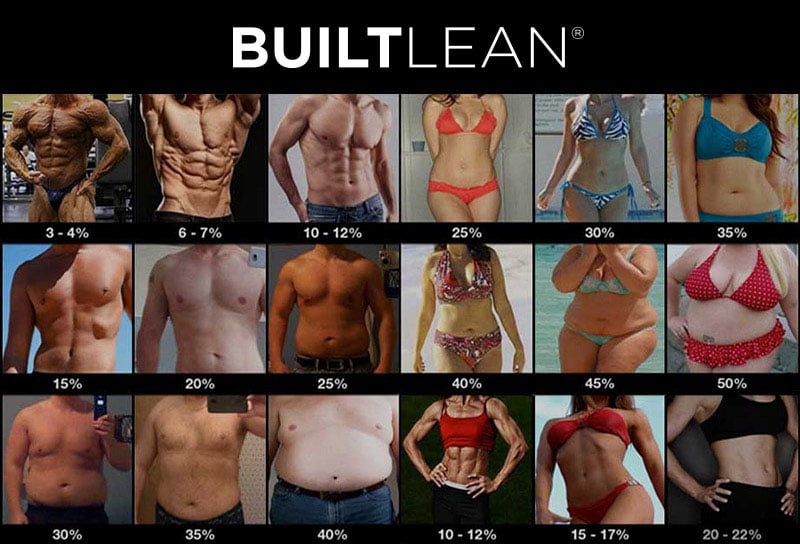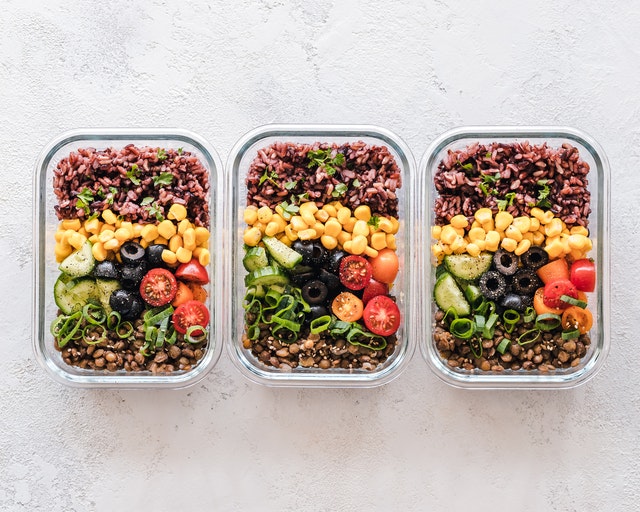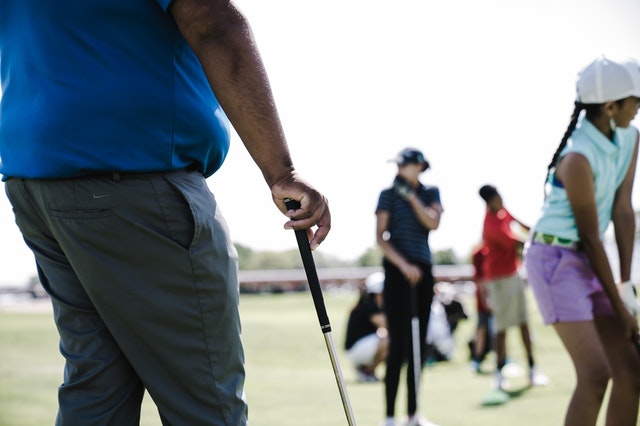Do your clothes feel tighter than before? Can’t put the belt through the same notch as you did a year ago? When you walk 18, do you feel winded and exhausted?
Do you want to walk 18 no problem like you did when you were in shape? Do you want to wear your favorite golf shirt again?
If so, you found the right article.
In this article, I’m going to give you the best meal plan for fat loss for golf. I’ll break it down to its most simple parts, so it’s easy to understand and implement in your life.
Even if you don’t play golf, the principles and practices explained in this article will help you shed pounds and keep them off for the rest of your life.
This fat loss meal plan for golf will give you the secret to sustainable fat loss. Also, it will help you determine exactly how much you need to eat, so you don’t have to guess. And, it will show you the foods to pursue and the foods to avoid, so you have complete clarity when you grocery shop or eat out.
Are you ready for the best meal plan for fat loss for golf?
Then strap in because it’s going to be an awesome ride full of enlightenment and fat loss motivation.
Who Wrote This?
If you’re new here, my name is Nico.

I’ve been playing golf since I was 10 years old when my uncle from New York took me and my brothers to the driving range for the first time. The first club I held was a blue Mickey Mouse driver, and I loved whacking the ball and watching it fly through the sky…even if it didn’t go straight.
When I was in eighth grade, I started a strength training program because I wanted to hit a homerun in baseball. That dream never came true, but the experience manifested into a passion to help people feel and perform better.
But enough about me. Let’s talk fat loss for golf.
The Secret to Fat loss for Golf
I’m going to tell you the secret to fat loss for golf, but first, you need to understand energy balance.
According to Precision Nutrition, energy balance is the relationship between the energy we take in via food and drink and the energy we expend via metabolism and physical activity.
How does energy balance relate to the secret for fat loss? To lose fat, the energy you expend via metabolism and physical activity must exceed the energy you take in via food and drink.
Therein lies the secret to fat loss. Burn more calories than you consume. In other words, be in a calorie deficit.
All the fad diets you know (e.g. keto, paleo, intermittent fasting, Nutrisystem, Weight Watchers) help people lose fat because they put people in a calorie deficit.
Certainly, it’s not your apple cider vinegar, AM/PM burner pills, celery juice, or the hours upon hours of cardio you do every week.
It’s your calories in and calories out.
That’s it.
Now the question becomes, how many calories do you eat to get in a calorie deficit?
How Much Should You Eat?
I’m going to show you the exact process I use with my 1-on-1 online coaching clients to find their target calories for fat loss.
It’s called the Katch-McArdle Equation.
Here’s how it works. First, you collect your known factors (shown below). Next, you determine your basal metabolic rate (BMR). Then, you calculate your maintenance calories. Last, you determine your target calorie intake. Let’s get into it.
Gather Your Known Factors
Write down your known factors to make your calculations easier.
- Bodyweight (BW)– Weigh yourself in the morning after you use the bathroom and before you eat or drink anything.
- Body Fat Percentage (BF%)– If you do not have a body fat measuring tool at home, that’s fine. When my online coaching clients send me progress pictures, I estimate their body fat percentage using the chart below from Marc Perry at BuiltLean.com.

Source: Marc Perry at BuiltLean.com
- Lean Body Mass (LBM)– To calculate your lean body mass, multiply your bodyweight by (100-BF%)/100. For the Katch-McArdle Equation, you’re going to need this number in kilograms. Simply divide LBM in pounds by 2.2. Follow the example below.
To calculate the Lean Body Mass (LBM) of a 150lb male with 25% body fat, follow the steps below:
LBM = BW * ((100-BF%)/100)
LBM = 150 * ((100-25)/100)
LBM = 112.5lbs
LBM in kg = 112.5/2.2
LBM = 51.14kg
- Activity Multiplier (AM)– This multiplier represents your current activity level.
- Very Inactive- 1.1 (couch potato)
- Mostly Sedentary- 1.2 (desk job, lifts weights 2-3x/week)
- Active- 1.3 (30min walk 5x/week, lifts weights 3-4x/week)
- Intense Training- 1.4 (sports 6-7x/week, lifts weights 2-4x/week)
- Extremely Active/Athlete- 1.5 (physical job, sports 3-5 days/week, lifts weights 2-3x/week, total psycho)
If you are in between two multipliers, choose the lower one. After you determine your activity multiplier, you have gathered all your known factors. Now, the math begins.
Calculate Your Basal Metabolic Rate (BMR)
Your BMR is the amount of calories your body needs at rest to maintain functionality. To calculate your BMR, you’ll need your Lean Body Mass in kilograms and the Katch-McArdle Equation:
Calculate the BMR of a 150lb male with 25% body fat from the example above.
BMR = 370 + (21.6 * LBM)
BMR = 370 + (21.6 * 51.14)
BMR = 1,475 calories
Now that you know how many calories you need to function at rest, determine your maintenance calories.
Determine Your Maintenance Calories
Your maintenance calories are the amount of calories you need to consume to stay the same bodyweight (give or take five pounds for natural fluctuations) at your current activity level.
For this calculation, use your BMR and your activity multiplier:
The 150lb male at 25% body fat works a desk job, and goes for a walk at lunch everyday for 30min. He also lifts weights 3x/week. Therefore, his activity multiplier (AM) is 1.3. Calculate his Maintenance Calories.
Maintenance Calories = BMR * AM
Maintenance Calories = 1,475 * 1.3
Maintenance Calories = 1,918 calories
You have your maintenance calories. Next, you figure out your calorie prescription.
Determine Your Target Calories
If your maintenance calories keep you at the same bodyweight, then your target calories will be less than your maintenance calories.
How many calories do you cut? For my online coaching clients, I’ll cut 15% of their calories. I choose 15% with beginners because the change is neither drastic nor prude. When followed, it leads to sustainable results.
To find your target calories intake for fat loss, multiply your maintenance calories by 0.85.
Calculate the 150lb male’s target calories if he cuts his maintenance calories by 15%.
Target Calories = Maintenance Calories * 0.85
Target Calories = 1,918 * 0.85
Target Calories = 1,630 calories
Congratulations! You now know exactly how many calories you need to achieve a calorie deficit. But what foods should you consume to hit your calories?
The Good, the Bad, and the Ugly

First, there’s no such thing as “bad” foods. There are foods high in calories, protein, fat, carbs, vitamins, minerals, added sugar, and more. But there are no “bad” foods.
However, there are foods that make fat loss easier. In this section, I will show you what to eat, so you can lose fat easier.
Protein for Fat Loss
Protein makes fat loss easier for three reasons:
- It’s satiating, so you stop eating sooner.
- It retains muscle mass. Muscle is active tissue, so it burns calories. To clarify, the more muscle you have, the more calories you burn.
- It has a high thermic effect. It take mores calories to digest protein than it does to digest an equal amount of carbs and fats. In other words, when you eat protein, your body burns more calories.
Not only is protein important for fat loss, it’s also important for building a healthy body. For example, protein bolsters immunity by aiding in the formation of antibodies, transfers and stores nutrients, maintains appropriate pH levels, and provides structure to your body.
How Much Protein Should You Eat?
Adequate protein intake is about 0.8g/lb of Lean Body Mass. To determine your target protein intake, multiply your Lean Body Mass in pounds by 0.8:
If a 150lb male has 25% body fat, then his LBM is 112.5lbs.
Protein = LBM * 0.8
Protein = 112.5 * 0.8
Protein = 90g
The grams of protein you find following the example above is the minimum amount you need to consume on a daily basis. If you eat more than your target protein intake, that’s fine. Eat as much protein as you want. However, make sure it does not put you over your target calorie intake.
Good sources of protein include:
- Greek Yogurt
- Eggs/Egg Whites
- Ground Meat (turkey, beef, chicken)
- Chicken Breast
- Rotisserie Chicken
- Fish
- Tofu
- Protein Powder/Bars
Carbs and Fats for Fat Loss
Carbs and fats get a bad rap because they often get blamed for someone’s unwanted weight gain.
On the contrary, carbs and fats don’t make you fat; too many calories over a long time make you fat.
You can still eat pasta, potatoes, and avocados, and still lose weight. Hell, you could eat a pint of Ben n Jerry’s every week, and still lose weight.
Moreover, carbs and fats are important for health. Carbs give our body quick source of energy to function while fats support cell growth and produce important hormones. You need carbs and fats in your diet.
Plus, when you begin your strength training, you’ll realize that you perform better when you include carbs and fats in your diets.
How Many Carbs and Fats Should You Eat?
When in a calorie deficit, you want to eat 0.5-2g per pound of bodyweight of carbs and 0.25-0.5g per pound of bodyweight of fat.
I recommend you play around with the numbers and find what works best for you. Some people feel better when they eat more carbs while others feel better when they eat more fats. Experiment with the ratio of carbs to fats, but don’t go over your calories.
Good Sources of Carbs and Fats
Carbs
- Oatmeal
- Fruit
- Vegetables
- Brown Rice
- Potatoes
Fats
- Extra Virgin Olive Oil
- Avocado and Avocado Oil
- Eggs
- Nuts
The Best Meal Plan for Fat Loss
In summary, the best meal plan for fat loss is the one you can stick to over time to give you sustainable results.
The sustainable part is important because the hard part is keeping the weight off. How often have you heard of someone lose over a hundred pounds of body fat only to regain the weight a few months later? Remember this: unsustainable methods lead to unsustainable results.
Create your own meal plan that includes the food you love, so you can live the life you want to live. Include your favorite foods like pastas and ice cream if you so choose. After all, the more you enjoy your meal plan, the more likely you are to stick to it.

